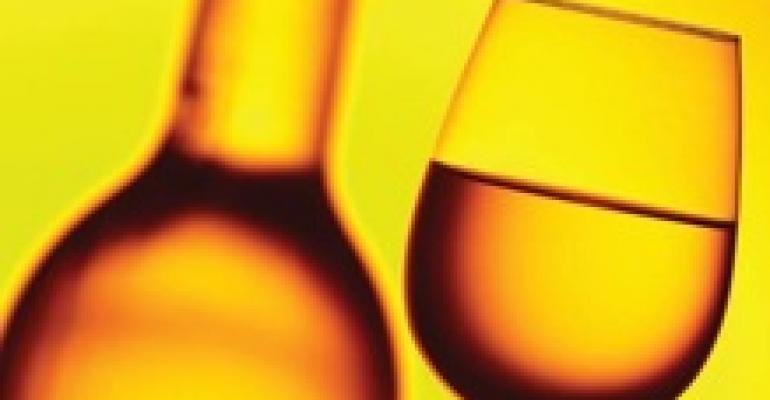 Amid the news of French wines getting beaten up in the U.S. marketplace by inexpensive and trendier imports from Australia and South America; French vineyards being uprooted for more saleable cash crops; and lakes of French wine sitting unsold waiting to be distilled into neutral alcohol for ethanol it's easy to lose sight of the fact that French wines remain one of the best choices and values for the prudent restaurateur. The more moderate levels of alcohol, the lessin-your-face fruitiness, and more balanced acidity and use of oak in French wines have always made them a great choice for food pairings. But what is interesting now is that, ignoring for a moment the dizzying heights to which top Bordeaux wine prices have hit, for the most part, France is a buyer's market for wine.
Amid the news of French wines getting beaten up in the U.S. marketplace by inexpensive and trendier imports from Australia and South America; French vineyards being uprooted for more saleable cash crops; and lakes of French wine sitting unsold waiting to be distilled into neutral alcohol for ethanol it's easy to lose sight of the fact that French wines remain one of the best choices and values for the prudent restaurateur. The more moderate levels of alcohol, the lessin-your-face fruitiness, and more balanced acidity and use of oak in French wines have always made them a great choice for food pairings. But what is interesting now is that, ignoring for a moment the dizzying heights to which top Bordeaux wine prices have hit, for the most part, France is a buyer's market for wine.
The effects of a strong Euro and even stronger competition from market savvy New World producers have not gone unnoticed in the home of some of the world's most prestigious wines. Many French producers have eschewed the "resting on their laurels" posture and have rolled up their sleeves to get to work on really marketing their wines instead of assuming that the world will come to their doorstep. For some of them it's not just about competitiveness, it's about survival. The results are: a tightening of the traditionally wide margins across the supply chain to keep prices in line with the competition, redesigned labeling that embraces varietal clarity and stylistic appeal over well-weathered traditions, and maybe most importantly, a rethink of the myriad of rigid production laws intended to protect the integrity and reputation of French wines, but are perhaps holding back the creativity and innovation that the modern market demands of winemakers and their products. All this is great news and bodes well for the future of French wines in the marketplace and, more critically, the mindscape of U.S. consumers, particularly younger wine drinkers who have no connection to the reputation of French wines being "the best" or even the cultural tradition of having wine with meals.
What this means for restaurateurs is that you can expect more solid and food friendly wines at better price points from the Rhone, Languedoc, Alsace, Provence as well as lesser known areas like Cotes de Gascogne, Cotes de Ventoux, and Costieres de Nimes that are making superb food wines at killer prices. Even luxurious Champagne brands are offering better priced introductory wines, often with snazzy new packaging and fun, less intimidating smaller-sized formats. So, don't write off French wines just yet. Their roots run very deep in American wine culture. In fact, all of the wine vines in France are planted on American rootstock and the good news is that new blossoms are budding.
Following are some of the more interesting French wines that we have recently reviewed at the Beverage Testing Institute for your glass pour and bottle lists. Prices are retail. Check for availability in your local market. For additional wine, beer, and spirits reviews, go to www.tastings.com.
Wines For Your List

Based on recommendations from The Beverage Testing Institute





